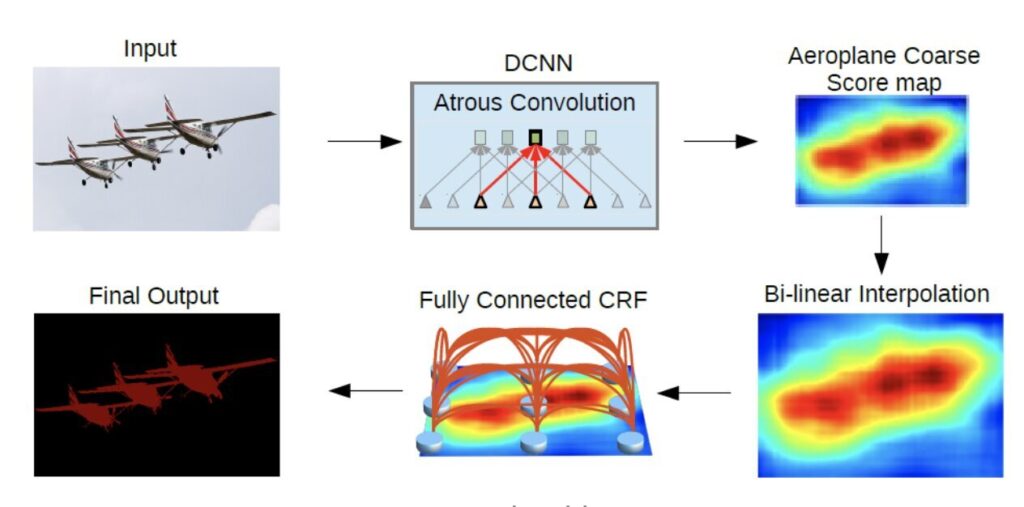DeepLab is a state-of-the-art deep learning model for semantic image segmentation, which aims to assign semantic labels to every pixel in an input image[1]. Developed by researchers at Google, DeepLab has evolved through several versions, each introducing significant improvements:
Key Features
-
Atrous Convolution: DeepLabv1 introduced atrous convolution to control the resolution of feature responses within deep convolutional neural networks[1].
-
Atrous Spatial Pyramid Pooling (ASPP): DeepLabv2 implemented ASPP to segment objects at multiple scales effectively[1].
-
Image-Level Features: DeepLabv3 augmented the ASPP module with image-level features to capture longer-range information[1].
-
Encoder-Decoder Structure: DeepLabv3+ added a simple yet effective decoder module to refine segmentation results, especially along object boundaries[1].
Network Backbones
DeepLab supports various network backbones, including:
- MobileNetv2 and MobileNetv3 for mobile devices
- Xception for server-side deployment
- ResNet-v1-50 and ResNet-v1-101
- PNASNet and Auto-DeepLab (HNASNet) found through neural architecture search[1]
Performance
DeepLab has achieved impressive results on popular semantic segmentation benchmarks such as PASCAL VOC 2012 and Cityscapes[1]. Its ability to accurately segment images at multiple scales and its flexibility in terms of network backbones have made it a popular choice for various computer vision tasks.
Applications
The model’s effectiveness in assigning semantic labels to pixels makes it valuable for numerous applications, including:
- Autonomous driving
- Medical image analysis
- Augmented reality
- Robotics
DeepLab’s continuous evolution and strong performance have established it as a cornerstone in the field of semantic image segmentation, pushing the boundaries of what’s possible in pixel-level image understanding[1][3].
Further Reading
1. models/research/deeplab/README.md at master · tensorflow/models · GitHub
2. DeepLab-Context/README.md at master · TheLegendAli/DeepLab-Context · GitHub
3. http://arxiv.org/pdf/1606.00915.pdf
4. DeepLabCut User Guide (for single animal projects) — DeepLabCut
5. Basic Syntax | Markdown Guide


